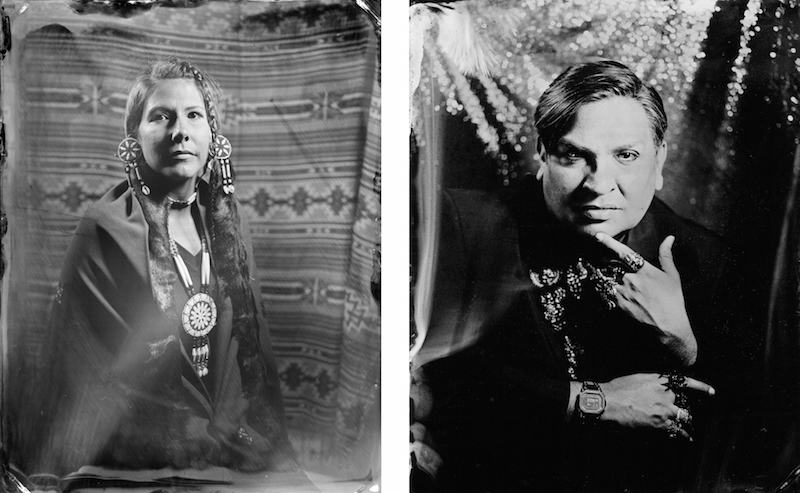This month’s Cameo introduces Elena Volkova, a photographer who never set out to be a portraitist, but who found herself taking on an ambitious portrait project just the same. (A photograph of Peter by Elena illustrates Bruun Studios’ home page.)
For an artist who does not consider herself to be a portrait photographer, Elena Volkova is awfully good at it.
Elena’s lens is more often than not turned toward quiet interiors or intimate landscapes, her work exploring nuances of object and light. Rarely does she photograph people, and she almost never uses antiquated techniques.
Her tintype photographs defy both generalities of her practice, to tremendous effect.
Elena began making tintype portraits after co-curating Reflections: A Brief History of Looking at Ourselves, a 2019-2020 exhibition at the Maryland Center for History and Culture. While excavating thousands of never-exhibited photographic portraits in the museum’s collection, she became fascinated by the diversity of the archive.
“Just because photography books of the past have not represented certain people does not mean those images do not exist,” she says. “They do. The images that have been preserved and advanced from our past do not actually reflect the diversity of people photographed 150 years ago.”
Her experience with the museum kindled her idea of creating a modern tintype archive of people today: illuminating individuality, honoring differences, dignifying the way each person wants to be represented.
Looking at her subjects and how they are photographed (smiling or not; with modern embellishments or not), our perceptions flip back and forth from the 19th to the 21st century. Elena intentionally chose tintype for her project, in effect building a bridge between past and present: through the technique’s glaze we see individuals from today—people we feel we could meet—as little different from those of the early 19th century. A transposition happens in the mind: suddenly these relics from the past are more easily experienced not as black-and-white cartoon versions of historical figures, but as actually having been flesh-and-blood—as having once been real and alive.

(Images courtesy of the artist, Elena Volkova; all are wet plate collodions, 4″x5″ in size. Titles, photo locations, and dates clockwise from top left: Jill, Longmont, 2019; Rene, studio, 2020; Lawrence, Open Works, 2020; Ruth, MDHS, 2019; Zoë, studio, 2019; Charlotte, studio, 2020)
Not only does Elena’s humanizing eye allow us to see people today for who they are in all their glorious difference, but (using tintype) she provides a portal for seeing those from yesterday as equally human.
The space between all of us shrinks.
So much distress across the globe and throughout time has been the result of “othering”—seeing a fellow being as less than human; less than ourselves. Elena’s eye is a corrective to that. Open to her work, we in turn open ourselves to deeper empathy.
With Elena’s humanizing art as a model, we become more human ourselves.
Elena continues her tintype work this month with Anacostia Portraits, a community-based project in partnership with Anacostia Art Center and sponsored by sponsored by Corcoran Women’s Committee, with support from ARCH Development Corporation. You can learn more or support the project by visiting this link.

